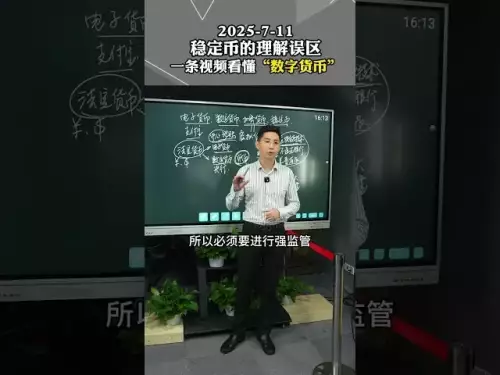-
 Bitcoin
Bitcoin $110200
-0.44% -
 Ethereum
Ethereum $4278
-0.32% -
 Tether USDt
Tether USDt $1.000
0.00% -
 XRP
XRP $2.802
-0.45% -
 BNB
BNB $859.6
1.16% -
 Solana
Solana $201.3
-0.88% -
 USDC
USDC $0.9999
0.00% -
 Dogecoin
Dogecoin $0.2145
-0.21% -
 TRON
TRON $0.3269
-1.34% -
 Cardano
Cardano $0.8214
-0.33% -
 Hyperliquid
Hyperliquid $46.01
-1.10% -
 Chainlink
Chainlink $22.12
-0.15% -
 Ethena USDe
Ethena USDe $1.001
0.00% -
 Sui
Sui $3.341
-1.34% -
 Bitcoin Cash
Bitcoin Cash $596.5
-2.52% -
 Stellar
Stellar $0.3559
-0.58% -
 Avalanche
Avalanche $24.55
0.88% -
 Hedera
Hedera $0.2151
-0.64% -
 Cronos
Cronos $0.2680
0.15% -
 UNUS SED LEO
UNUS SED LEO $9.574
0.49% -
 Litecoin
Litecoin $112.1
-0.30% -
 Toncoin
Toncoin $3.053
-1.10% -
 Shiba Inu
Shiba Inu $0.00001225
-0.67% -
 Polkadot
Polkadot $3.804
-0.30% -
 Uniswap
Uniswap $9.314
-0.44% -
 Dai
Dai $0.9998
0.00% -
 Ethena
Ethena $0.7359
11.31% -
 Monero
Monero $266.0
-0.37% -
 World Liberty Financial
World Liberty Financial $0.1975
8.19% -
 Aave
Aave $299.5
-0.96%
How to use the KuCoin API?
The KuCoin API enables developers to trade, manage orders, and access market data via REST and WebSocket endpoints, with secure authentication and real-time updates.
Sep 07, 2025 at 02:37 am
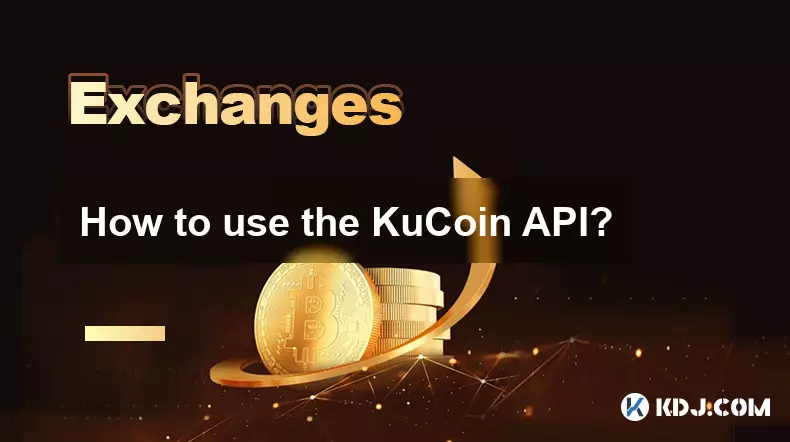
Understanding the KuCoin API Structure
1. The KuCoin API is a RESTful interface that allows developers to interact with the exchange programmatically. It supports functionalities like retrieving market data, placing trades, managing orders, and accessing account information. Each endpoint follows a standardized URL format, typically starting with https://api.kucoin.com.
2. Authentication is required for private endpoints and is achieved using a combination of API key, secret key, and passphrase. These credentials are generated within the KuCoin user account under the API management section. The authentication process involves creating a signature using HMAC-SHA256 encryption based on the request parameters and timestamp.
3. Public endpoints, such as those for ticker data or order book snapshots, do not require authentication. These can be accessed directly via HTTP GET requests. Developers should adhere to rate limits to avoid being temporarily blocked. KuCoin enforces strict rate limiting policies, especially for high-frequency requests.
4. All responses are returned in JSON format, making it easy to parse and integrate into various programming environments. Error messages also follow a consistent structure, including code, message, and additional details when applicable. Proper error handling is essential to maintain robust application performance.
5. KuCoin supports WebSocket connections for real-time data streaming. This includes updates on order books, trade executions, and balance changes. WebSocket endpoints require a signed connection for private data but allow public market feeds without authentication.
Setting Up API Credentials
1. To begin using the KuCoin API, users must log into their KuCoin account and navigate to the 'API Management' section. Here, they can create a new API key by specifying permissions such as reading, trading, or withdrawal access. It's crucial to assign only the necessary permissions to minimize security risks.
2. During the creation process, users will be prompted to set an IP whitelist. This enhances security by restricting API access to specific IP addresses. If no IP is specified, the API key can be used from any location, which increases vulnerability to unauthorized use.
3. After generating the API key, secret key, and passphrase, these values must be stored securely. The secret key and passphrase are only shown once during creation and cannot be retrieved later. Losing them means the key must be revoked and regenerated.
4. Developers should avoid hardcoding credentials in source files. Instead, environment variables or secure configuration files should be used to store sensitive information. This practice reduces the risk of accidental exposure, especially when using version control systems.
5. KuCoin allows multiple API keys per account, enabling different applications or services to operate independently. Each key can have distinct permissions and IP restrictions, providing granular control over access and functionality.
Executing Trades and Managing Orders
1. Placing an order through the KuCoin API involves sending a POST request to the /api/v1/orders endpoint. Required parameters include the symbol (e.g., BTC-USDT), order type (limit or market), side (buy or sell), and size or funds depending on the order type.
2. For limit orders, the price parameter must be included. Market buy orders require the amount of quote currency (e.g., USDT), while market sell orders require the base currency amount (e.g., BTC). Incorrect parameter usage results in validation errors.
3. Once submitted, the API returns an order ID, which can be used to track the status of the trade. Developers can query order details using the /api/v1/orders/{orderId} endpoint or retrieve a list of active orders via /api/v1/orders with appropriate filters.
4. Canceling an order is done through a DELETE request to the same endpoint, specifying the order ID. Batch cancellation is also supported for multiple orders under the same symbol or across all symbols, depending on the endpoint used.
5. Real-time order updates can be monitored using the WebSocket feed /market/level2, which provides incremental order book changes. This enables high-frequency trading strategies and reduces latency compared to polling REST endpoints.
Frequently Asked Questions
What is the rate limit for KuCoin API requests?Public endpoints allow up to 600 requests per minute per IP, while private endpoints are limited to 600 requests per minute per user. Exceeding these limits results in a temporary ban. Developers should implement throttling mechanisms to stay within these thresholds.
Can I use the KuCoin API for margin trading?Yes, KuCoin provides API endpoints for margin trading under the /api/v1/margin/orders path. Users must enable margin trading on their account and ensure their API key has the necessary permissions before executing margin orders.
How do I handle API downtime or failures?Implement retry logic with exponential backoff for failed requests. Monitor KuCoin’s official status page and subscribe to their system announcements. Use circuit breaker patterns in production applications to prevent cascading failures during outages.
Is two-factor authentication required to use the API?While 2FA is not required for API calls themselves, it is strongly recommended for account security. API keys bypass 2FA, so securing them properly is essential to prevent unauthorized access to funds.
Disclaimer:info@kdj.com
The information provided is not trading advice. kdj.com does not assume any responsibility for any investments made based on the information provided in this article. Cryptocurrencies are highly volatile and it is highly recommended that you invest with caution after thorough research!
If you believe that the content used on this website infringes your copyright, please contact us immediately (info@kdj.com) and we will delete it promptly.
- Pepe Coin's Moon Potential Fading? Altcoins Like Remittix Steal the Show
- 2025-09-07 08:25:15
- Riding the Crypto Wave: WLFI Token Hype vs. ZA Miner's Cloud Mining Daily Profits
- 2025-09-07 08:45:13
- Meme Coins: 100x Forecasts and the 2025 Outlook – Are We There Yet?
- 2025-09-07 08:45:13
- Altcoin Leverage Alert: ENA & Market Data Show Risky Speculation
- 2025-09-07 08:50:12
- XRP, Bitcoin, and the Altcoin Market: A New Yorker's Take on the Crypto Scene
- 2025-09-07 10:30:12
- BlockDAG, Uniswap, and Chainlink: Decoding Whale Moves and Market Momentum
- 2025-09-07 08:55:12
Related knowledge
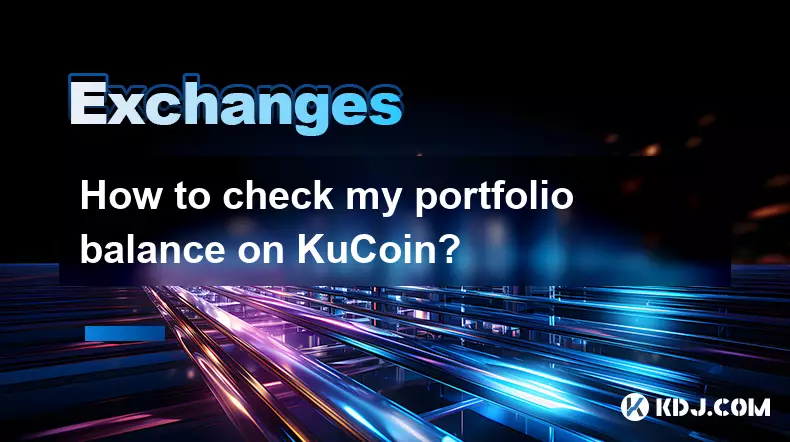
How to check my portfolio balance on KuCoin?
Sep 06,2025 at 10:36am
Accessing Your KuCoin Account Dashboard1. Navigate to the official KuCoin website or open the KuCoin mobile application. Ensure you are using a secure...

How to buy USDT on KuCoin?
Sep 06,2025 at 08:55am
Creating and Verifying Your KuCoin Account1. Navigate to the official KuCoin website and click on the 'Sign Up' button to begin registration. Provide ...
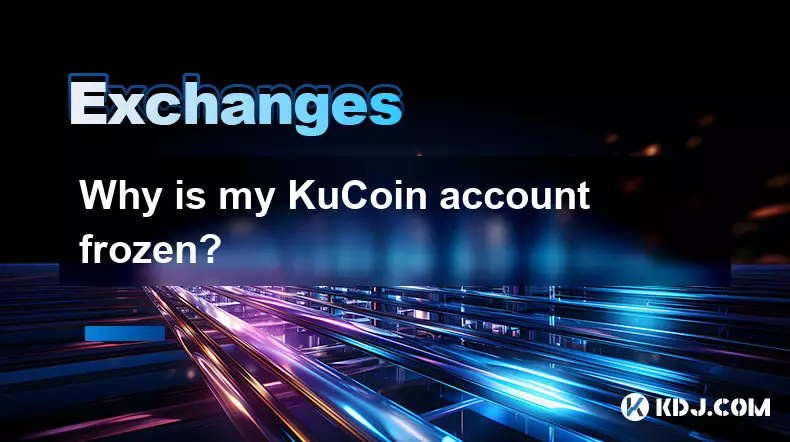
Why is my KuCoin account frozen?
Sep 05,2025 at 06:55pm
Common Reasons for a Frozen KuCoin Account1. Unverified identity information. KuCoin requires users to complete KYC (Know Your Customer) procedures to...

How to use the KuCoin API?
Sep 07,2025 at 02:37am
Understanding the KuCoin API Structure1. The KuCoin API is a RESTful interface that allows developers to interact with the exchange programmatically. ...
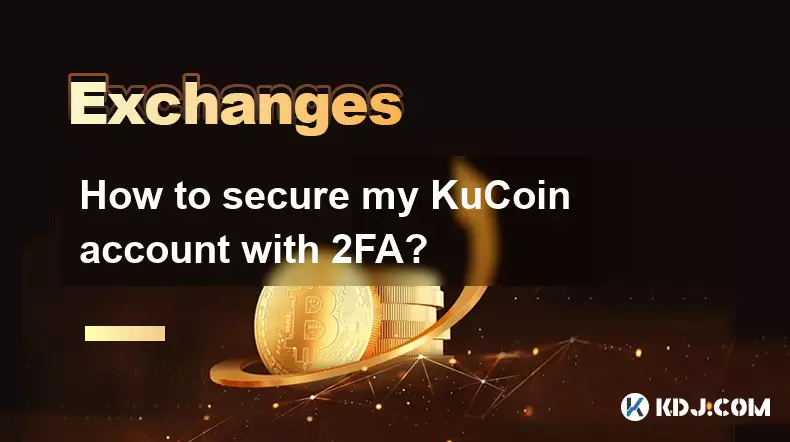
How to secure my KuCoin account with 2FA?
Sep 07,2025 at 02:18am
Setting Up 2FA on Your KuCoin Account1. Log into your KuCoin account through the official website or mobile application. Navigate to the 'Security' se...

Can I use KuCoin without KYC?
Sep 06,2025 at 02:37pm
Understanding KuCoin's Verification Policies1. KuCoin operates with a tiered access model that allows users to engage with the platform even without c...

How to check my portfolio balance on KuCoin?
Sep 06,2025 at 10:36am
Accessing Your KuCoin Account Dashboard1. Navigate to the official KuCoin website or open the KuCoin mobile application. Ensure you are using a secure...

How to buy USDT on KuCoin?
Sep 06,2025 at 08:55am
Creating and Verifying Your KuCoin Account1. Navigate to the official KuCoin website and click on the 'Sign Up' button to begin registration. Provide ...

Why is my KuCoin account frozen?
Sep 05,2025 at 06:55pm
Common Reasons for a Frozen KuCoin Account1. Unverified identity information. KuCoin requires users to complete KYC (Know Your Customer) procedures to...

How to use the KuCoin API?
Sep 07,2025 at 02:37am
Understanding the KuCoin API Structure1. The KuCoin API is a RESTful interface that allows developers to interact with the exchange programmatically. ...

How to secure my KuCoin account with 2FA?
Sep 07,2025 at 02:18am
Setting Up 2FA on Your KuCoin Account1. Log into your KuCoin account through the official website or mobile application. Navigate to the 'Security' se...

Can I use KuCoin without KYC?
Sep 06,2025 at 02:37pm
Understanding KuCoin's Verification Policies1. KuCoin operates with a tiered access model that allows users to engage with the platform even without c...
See all articles





















![Daily Level for 9/7/2025: Momentum by EnenzoGD (WITH COIN) [GD Daily Video #809] Daily Level for 9/7/2025: Momentum by EnenzoGD (WITH COIN) [GD Daily Video #809]](/uploads/2025/09/07/cryptocurrencies-news/videos/daily-level-momentum-enenzogd-coin-gd-daily-video/68bcd9494f8d8_image_120_90.webp)


